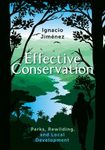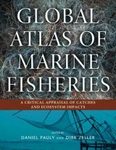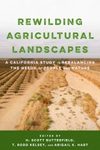Textbook
By: Karen D Holl(Author)
202 pages, 2 b/w photos, 19 b/w illustrations, tables
Ideally suited for introductory classes, this primer provides advice on the theory and practice of ecosystem restoration.
![Primer of Ecological Restoration Primer of Ecological Restoration]()
Click to have a closer look
About this book
Contents
Customer reviews
Related titles
About this book
The pace, intensity, and scale at which humans have altered our planet in recent decades is unprecedented. We have dramatically transformed landscapes and waterways through agriculture, logging, mining, and fire suppression, with drastic impacts on public health and human well-being. What can we do to counteract and even reverse the worst of these effects? Restore damaged ecosystems.
The Primer of Ecological Restoration is a succinct introduction to the theory and practice of ecological restoration as a strategy to conserve biodiversity and ecosystems. In twelve brief chapters, the book introduces readers to the basics of restoration project planning, monitoring, and adaptive management. It explains abiotic factors such as landforms, soil, and hydrology that are the building blocks to successfully recovering microorganism, plant, and animal communities. Additional chapters cover topics such as invasive species and legal and financial considerations. Each chapter concludes with recommended reading and reference lists, and the book can be paired with online resources for teaching.
Perfect for introductory classes in ecological restoration or for practitioners seeking constructive guidance for real-world projects, Primer of Ecological Restoration offers accessible, practical information on recent trends in the field.
Contents
Preface
Acknowledgments
Chapter 1. Why Restore Ecosystems?
Chapter 2. Defining Restoration
Chapter 3. Project Planning
Chapter 4. Monitoring and Adaptive Management
Chapter 5. Applying Ecological Knowledge to Restoration
Chapter 6. Landform and Hydrology
Chapter 7. Soil and Water Quality
Chapter 8. Invasive Species
Chapter 9. Revegetation
Chapter 10. Fauna
Chapter 11. Legislation
Chapter 12. Paying for Restoration
Glossary
References
List of Case Studies and Other Online Resources
About the Author
Index
Customer Reviews
Textbook
By: Karen D Holl(Author)
202 pages, 2 b/w photos, 19 b/w illustrations, tables
Ideally suited for introductory classes, this primer provides advice on the theory and practice of ecosystem restoration.
"A long-awaited and critically needed comprehensive synthesis of ecological restoration. Covering different types of ecosystems and disciplines, this primer provides an authoritative overview of restoration concepts and practices, serving as a foundation for training students and professionals to play a role in the emerging global restoration movement."
– Pedro Brancalion, restoration ecologist, University of São Paulo, Brazil
"Holl writes about the realities of restoring nature, and aims for effective restoration approaches for projects with long-term sustainability. This book tells how it all fits together to improve the earth."
– Joy Zedler, Aldo Leopold Professor Emerita, University of Wisconsin–Madison


































